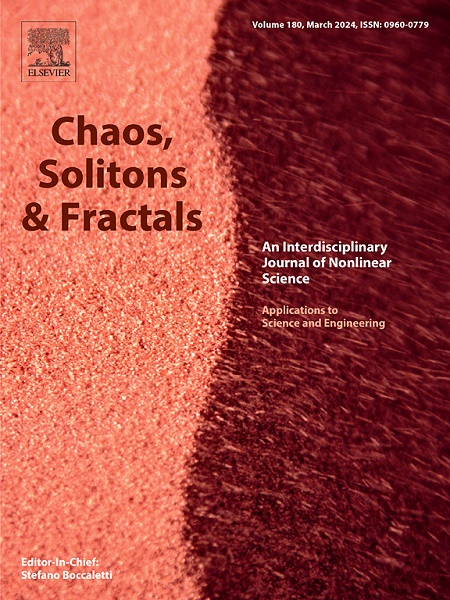Time periodic travelling waves for an advection–reaction–diffusion SIR epidemic model with seasonality and bilinear incidence
IF 5.6
1区 数学
Q1 MATHEMATICS, INTERDISCIPLINARY APPLICATIONS
引用次数: 0
Abstract
In order to investigate the influence of spatial convection effect and the periodic environment on the spreading behaviour of epidemic, in this paper, an SIR epidemic model with time varying coefficients and diffusion advection is proposed. The periodic travelling waves satisfying certain boundary conditions are discussed by constructing operators on bounded closed convex sets consisting of periodic upper and lower solutions, utilizing the twice fixed point theorem and some limit techniques. The results show that the existence of travelling waves depends on the reproduction number and the critical wave speed . Specifically, when and , the existence of periodic travelling waves satisfying some boundary condition is obtained, and the nonexistence of such travelling waves for two cases (i) and , (ii) and are also obtained. Finally, some brief simulations are shown to verify the theoretical results, and the effects of spread speed and advection phenomena on disease spread were further investigated.
具有季节性和双线性发病率的平流-反应-扩散SIR流行病模型的时周期行波
为了研究空间对流效应和周期性环境对流行病传播行为的影响,本文提出了具有时变系数和扩散平流的SIR流行病模型。利用二次不动点定理和一些极限技巧,在由周期上下解组成的有界闭凸集上构造算子,讨论了满足一定边界条件的周期行波。结果表明,行波的存在取决于再现数R0和临界波速c *。具体地说,当R0>;1和c>;c∗时,得到满足某些边界条件的周期行波的存在性,并得到(i) R0>;1和(0<c<c∗,(ii) R0≤1和c≥0两种情况下不存在周期行波。最后,通过简单的模拟验证了理论结果,并进一步研究了传播速度和平流现象对疾病传播的影响。
本文章由计算机程序翻译,如有差异,请以英文原文为准。
求助全文
约1分钟内获得全文
求助全文
来源期刊

Chaos Solitons & Fractals
物理-数学跨学科应用
CiteScore
13.20
自引率
10.30%
发文量
1087
审稿时长
9 months
期刊介绍:
Chaos, Solitons & Fractals strives to establish itself as a premier journal in the interdisciplinary realm of Nonlinear Science, Non-equilibrium, and Complex Phenomena. It welcomes submissions covering a broad spectrum of topics within this field, including dynamics, non-equilibrium processes in physics, chemistry, and geophysics, complex matter and networks, mathematical models, computational biology, applications to quantum and mesoscopic phenomena, fluctuations and random processes, self-organization, and social phenomena.
 求助内容:
求助内容: 应助结果提醒方式:
应助结果提醒方式:


